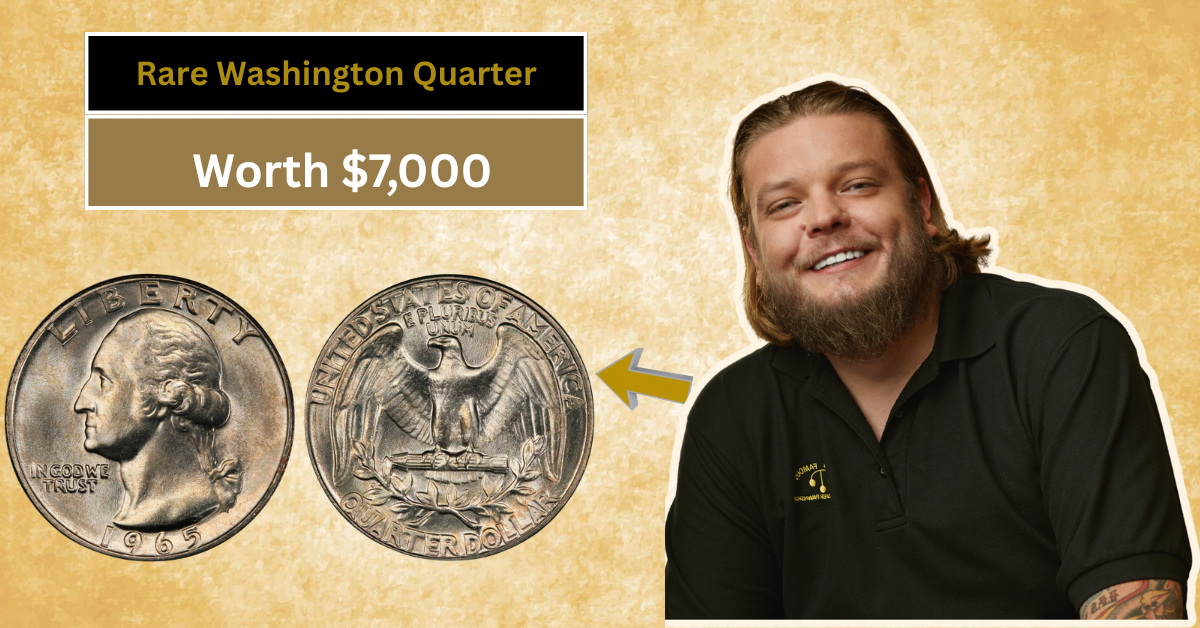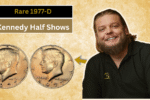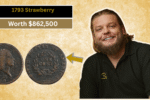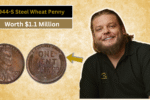Washington quarters are popular among coin collectors worldwide, but few know about the rare and valuable silver transitional errors from 1965. These coins look like regular clad quarters but contain silver, making them a hidden treasure for those who know how to identify them. Understanding these errors can unlock surprising values, sometimes worth thousands of dollars.
If you’re a collector or just curious about coins, learning how to weigh and ring-test these Washington quarters is essential. This guide will help you detect the $7,000 clad-to-silver mistakes and explain the simple methods to spot valuable errors quickly. No special tools are needed, making this information accessible to everyone.
What Are Washington Quarter Silver Transitional Errors?
In 1965, the United States Mint officially stopped using silver in quarters, switching to a copper-nickel clad composition. However, some coins from that year accidentally contain the older 90% silver core. These mistakes are called silver transitional errors. They are rare because the Mint was changing materials and processes at that time.
Collectors value these quarters highly because most 1965 quarters are common clad coins with little collectible value. Finding one with a genuine silver core can be like striking gold—except in silver! These errors provide a unique link to a significant moment in coin history, which makes them particularly exciting.
Why Is the Silver Content Important?
The value difference between a regular 1965 clad quarter and a silver transitional error is huge. A typical clad quarter is worth its face value, about 25 cents, while a silver transitional error can be worth $7,000 or more to the right collector. The key is the silver content. Silver coins are heavier and produce a distinct sound when dropped or tapped.
Because silver has a different density than copper and nickel, a quarter made with silver feels noticeably different. Identifying silver content helps separate valuable errors from common coins, making it a critical part of the detection process.
How to Weigh a 1965 Quarter to Find Silver Errors
Weighing a quarter is the simplest way to check if it contains silver. A standard 1965 clad quarter weighs about 5.67 grams, while a silver quarter from before 1965 weighs 6.25 grams. This difference is small but measurable with a sensitive digital scale.
To test your quarter:
- Use a digital scale accurate to at least 0.01 grams.
- Place the coin gently on the scale.
- Compare the result to 5.67 grams (clad) and 6.25 grams (silver).
If the coin weighs closer to 6.25 grams, it may contain silver.
How to Ring-Test Your Quarter for Silver Content
Ring testing is a popular, non-destructive method that uses sound to detect metal composition. Silver coins produce a clear, high-pitched ring, while clad coins make a duller, shorter sound.
To ring-test your quarter:
- Tap the coin gently with a metal object like a small knife or another coin.
- Listen closely to the sound it makes.
- A silver quarter sounds like a clear, bell-like ring that lasts a few seconds.
- A clad quarter gives a muted, flat sound that fades quickly.
This method might take practice to identify sounds, but it’s an easy way to test coins without special equipment.
Additional Tips for Spotting Silver Transitional Errors
Besides weighing and ring-testing, there are a few extra clues to look for on your quarter. Silver quarters often have sharper details due to the different metal characteristics. You might notice a slightly different edge color that looks more silver than copper or nickel.
Also, check the coin’s date and mint marks carefully. Since these errors are rare, they usually come from specific mints or batches. Researching common error patterns for 1965 quarters will help you narrow down potential silver transitional coins.
What to Do If You Find a Silver Transitional Error
If you discover your 1965 Washington quarter weighs closer to 6.25 grams and rings clear, you could have a valuable coin worth thousands. The next step is to have it professionally authenticated by a trusted coin grading service. Authentication confirms the silver content and verifies the coin’s condition, which affects its value significantly.
Once authenticated, you can choose to sell it to a collector, auction it online, or add it to your collection. Remember, these errors are rare and in demand, so it’s essential to work with reputable dealers or platforms to get the best price.
Conclusion: Why You Should Check Your Washington Quarters
Many Indian collectors and hobbyists might have 1965 quarters without realizing their worth. A simple weight check and ring test could reveal a hidden silver treasure worth $7,000 or more. Learning how to spot these transitional errors is easy and can add excitement and value to your coin collection.
So, next time you come across a 1965 Washington quarter, take a moment to weigh and ring-test it. You might discover a rare piece of silver coin history just waiting to be uncovered! Start exploring, and who knows—you could be the lucky one to find this valuable mistake.




